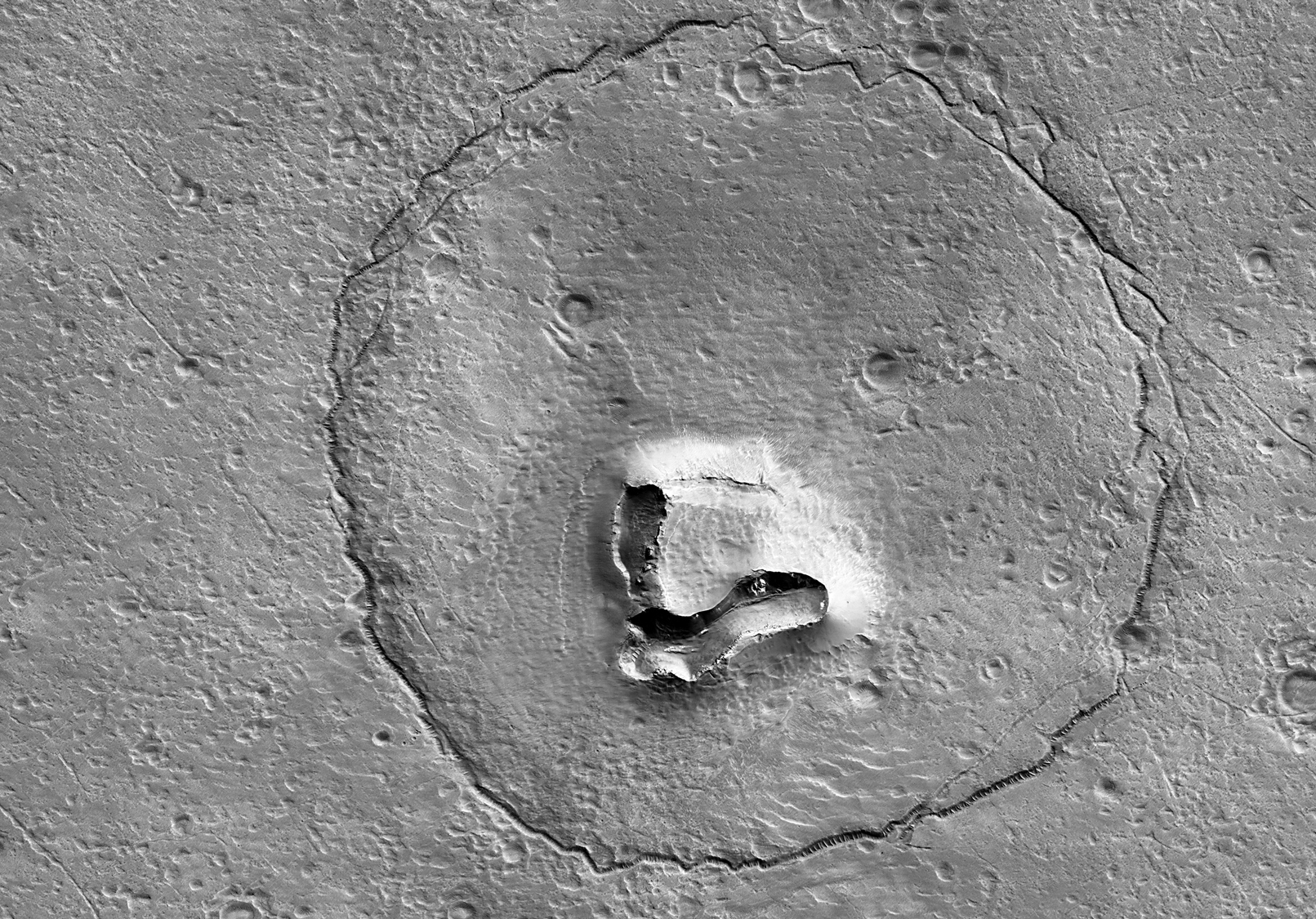Is there life on Mars? Well, there IS a giant bear's face
Ursa Major, Ursa Minor, Ursa on Mars! A crater that looks like a bear's face has been photographed on the surface of Mars

A crater that looks like a bear’s face has been captured on the surface of Mars by the HiRISE camera aboard the Mars Reconnaissance Orbiter (MRO).
For the last 16 years, the MRO has been orbiting Mars in a mission to understand the history of the red planet. Previous missions have shown that, once upon a time, water did flow across its surface, but it’s not clear how long for or whether it was long enough to sustain life.
• These are the best cameras for astrophotography, from purpose-built astro cameras to great mirrorless and DSLR systems
While the latest image doesn’t exactly prove that life on Mars ever existed, it does show a view of the planet's surface that hasn’t been seen before. The bear-like face is made up of a circular fracture complete with two shallow craters that resemble eyes. In the middle of the circle, a V-shaped crevice atop a lighter patch creates the outline of the bear's nose.
The HiRISE camera onboard the MRO can capture images that contain up to 28 gigabits of data in just 6 seconds, have a staggering swath width of 3.7 miles, and a programmable image length of up to 37 miles. The camera operates in visible wavelengths, just like the human eye, but its telescopic lens used from 186 miles away enables researchers to identify objects on the planet's surface that are no bigger than 3 feet.
Weighing 143lbs (65kg) it's the most expensive instrument onboard the MRO and arguably one of the most important, as it sends accurate visual representations of the surface of Mars enabling scientists to track landscapes in its landscape.
While you won’t be able to make out the bear's face even if you are using one of the best telescopes for astrophotography, it is very common to see the red planet from Earth. However, 2023 is an 'off' year for one of our closest neighboring planets; from February 14 it will shine with just a third of the luster it had at the beginning of the year, so if you want to catch it shining brightly you had better do it soon!
The best camera deals, reviews, product advice, and unmissable photography news, direct to your inbox!
The best lenses for astrophotography are wide angle primes or wide-angle zooms that allow you to capture the beautiful night sky

Having studied Journalism and Public Relations at the University of the West of England Hannah developed a love for photography through a module on photojournalism. She specializes in Portrait, Fashion and lifestyle photography but has more recently branched out in the world of stylized product photography. Hannah spent three years working at Wex Photo Video as a Senior Sales Assistant, using her experience and knowledge of cameras to help people buy the equipment that is right for them. With eight years experience working with studio lighting, Hannah has run many successful workshops teaching people how to use different lighting setups.
